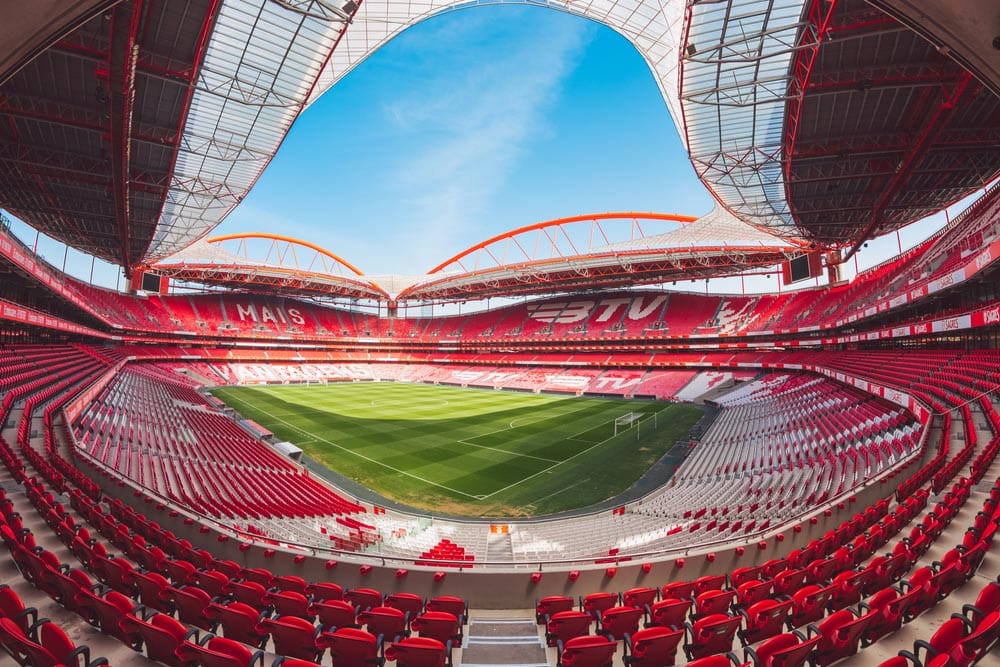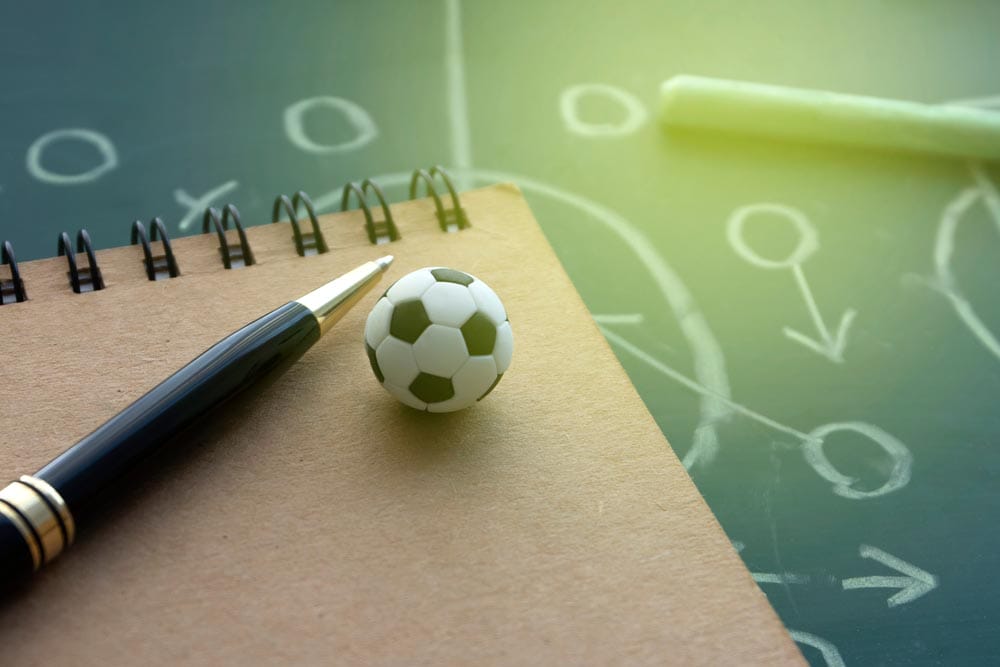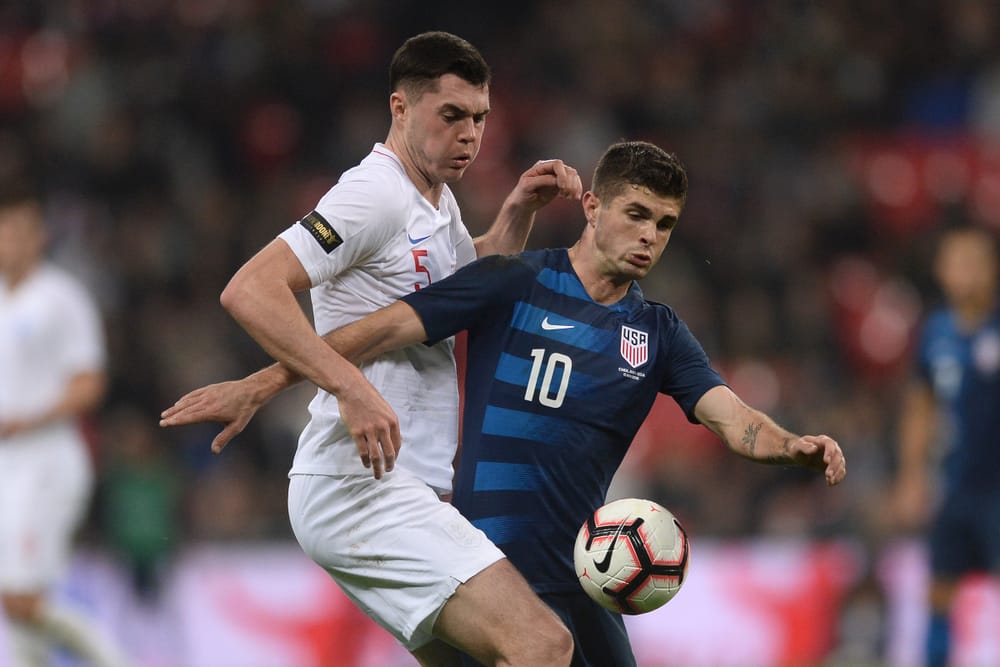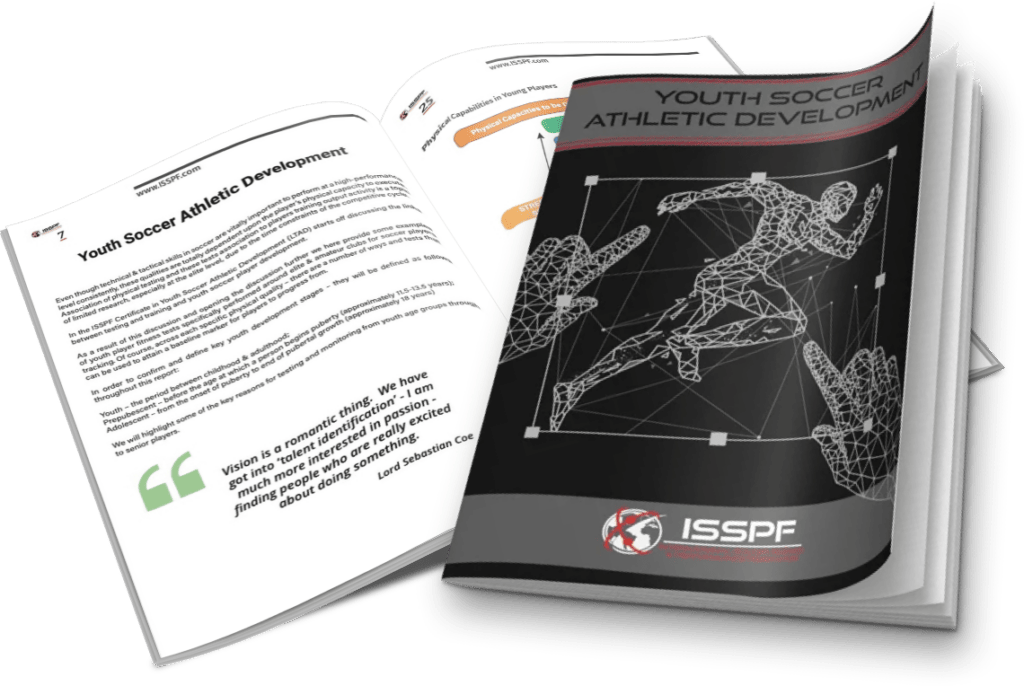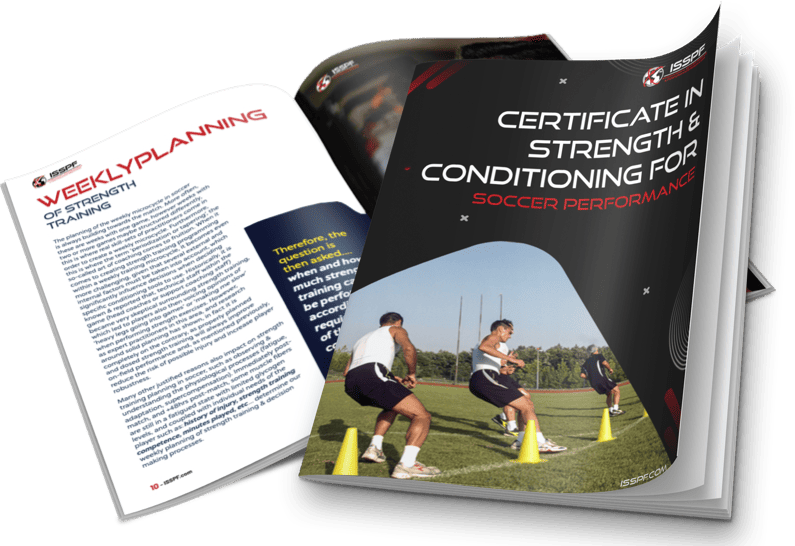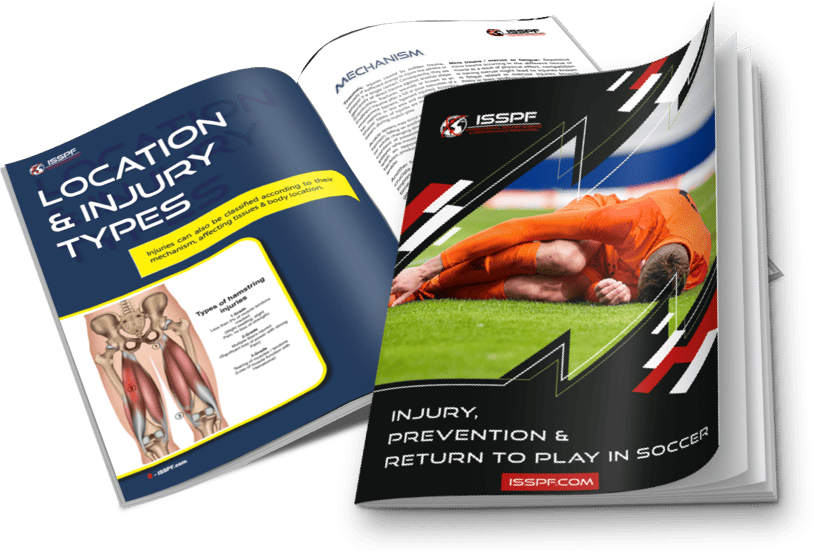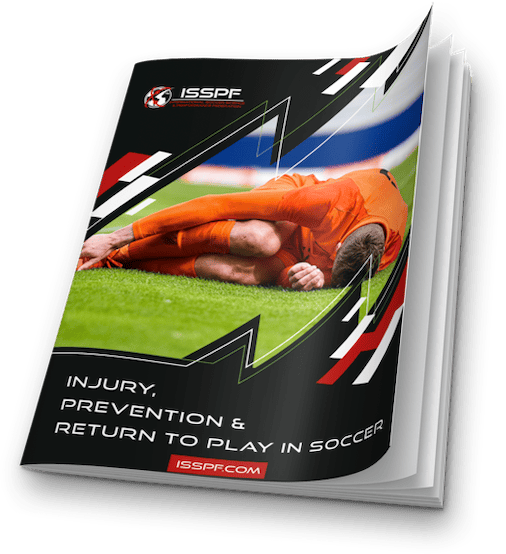With the exponential rise in soccer competitions worldwide in recent years, the playing schedules of those selected to their national teams is more taxing than ever with heightened physical and cognitive fatigue.
As a result, players are expected to train and play for ten to eleven months of the year with little or no break when transitioning between domestic and national team environments (Figure 1).
The key emphasis of the multi-disciplinary support teams especially the sports scientist in this case are of the utmost importance in order to be able to facilitate the safe integration and return of players to potentially very different training environments and philosophies.
Additionally, cohesion and high levels of communication are required between key stakeholders in each department inclusive of medical and sports science, technical staff, general manager through to the team administrator and operations.

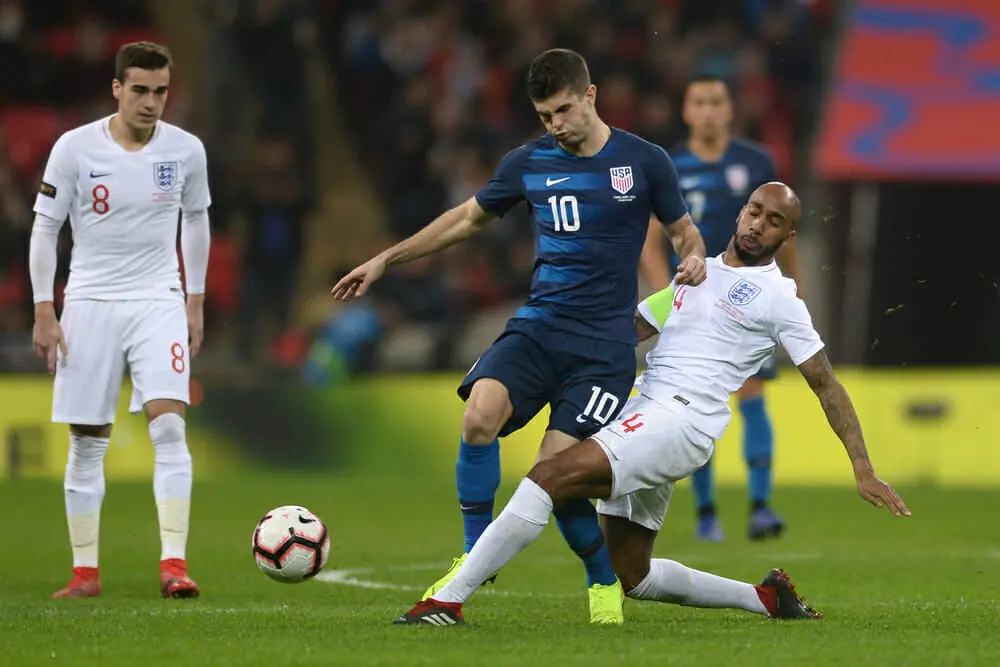
Players Need Coaches Support
As a practitioner working in the national team setting of elite football, it is important to collate pertinent information on the player pool from which to select the final squad from.
Detail on recent physical exposure and training status may complement technical-tactical reports from the head coach, their assistants and scouts to inform his or her selection process.
Despite not being on the pitch with players on a daily basis in the club environment, there is a myriad of performance and social factors that national team sports science staff need to consider and share with the multi-disciplinary team to support players coming in and to ensure optimal performance.
As the football calendar heads into the Qatar 2022 World Cup on the back of the delayed Euro 2020, and with the current Africa Cup of Nations 2022, this way of managing International level players has never been more pertinent.
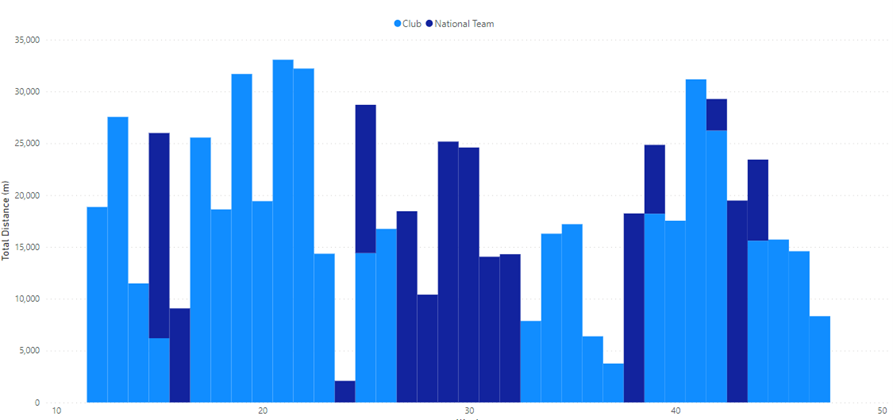
Physical Status and Club Philosophy
As players move between environments it is important to have prior knowledge of their training status and game exposures.
This then enables the planning and periodization of appropriate training load (ISSPF Training Load Management Course) to integrate them safely, whilst respecting their current training tolerance (using tools such as the acute-chronic workload ratio, Gabbett, 2016).
Furthermore, what is this recent ‘training load’ comprised of? Is there regular match play exposure of 90 mins, a regular 45 mins or sporadic appearances as a late substitute. Previous research has found likely large increases in physical load exposure when switching to national team training and competition schedules (Noor et al., 2019).
The players’ home environment may also constitute a different stage of the season when called in to national team camp FIFA windows in October and November coincide with the end of the season and domestic play-offs in North America, whereas it is the early stages of the season in Europe and players may not have accumulated the degree of physical and cognitive fatigue as some colleagues (Mohr et al., 2003).
Not only may players be at a different phase of their season, but they may be in domestic leagues that entail quite contrasting playing styles and coaching, conditioning and periodization philosophies, which have been reported to have influence over both physical and technical outputs in different positional roles (Dellal et al., 2011; Di Salvo et al., 2013), but also the injury risk when new staff and systems of play are implemented (Ekstrand et al., 2019).
Moreover, practices for strength and conditioning, injury prevention, nutrition and recovery interventions may also differ according to varying philosophies and training methodology and need to be catered for to ensure continuity between environments where possible.
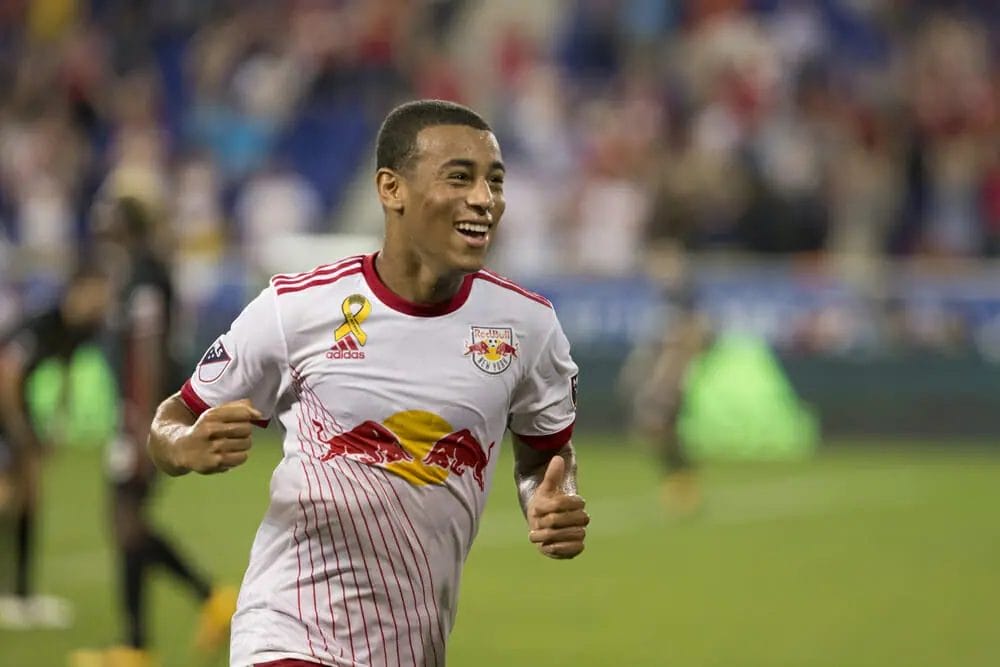
Ideally, as much information is exchanged reciprocally between clubs and national teams to be able to support the player optimally (Buchheit, 2018). From a national team perspective, the aim is to get the best understanding of each player’s ‘fingerprint’ to manage them in an appropriate way whilst under the care and instruction of the Head Coach and his staff.
International Camp Schedule and Periodisation
In relation to each individual players specific status at the time of an international camp, there must also be attention paid to the context surrounding the event.
For example, is the camp purely a training camp with intra-squad matches, training with two to three international games (i.e. World Cup Qualifying), or a major tournament (World Cup/Olympic Games) with congested fixture periods.
So, in addition to the style of play factor and positional role asked by the national team head coach, consideration should also be given to the density of match play and interspersing recovery ahead and whether they are well prepared for these types of schedules where physical demands are high.
Despite these, research has found there is not necessarily a change in match running performance in congested fixture periods (Dupont et al., 2010; Lago-Penas et al., 2011).
The Studies Show Conflicting Results
There is also contrasting information on perceived heightened risk of injury during such periods, with Bengtsson et al. (2013) finding no change in injury with congested fixtures separated by varied separating recovery days between matches, with Dellal et al., (2015) finding an increased injury rate during matches in congested periods with short turnaround times, with training injuries more apparent in non-congested periods.
Interestingly, FIFA World Cup players were also found to exhibit the same injury rates as their colleagues not participating in this major tournament (Ekstrand, Walden and Hagglund, 2004).
Carling et al., (2015) also found a 13% higher injury rate in international versus non-international players in a Ligue 1 club.
Players from top teams in the English Premier League, La Liga and Ligue 1 may play more total games per season (Ekstrand, Walden and Hagglund, 2004) whereas teams in the English Championship and USL in North America be more accustomed to these congested schedules more than others.
Performance and technical staff can then seek to execute plans for player rotation (Ekstrand, Walden and Hagglund, 2004) and top-up conditioning strategies (Buchheit, 2019) allowing for windows of opportunity for recovery of the neuromuscular system or match preparation.
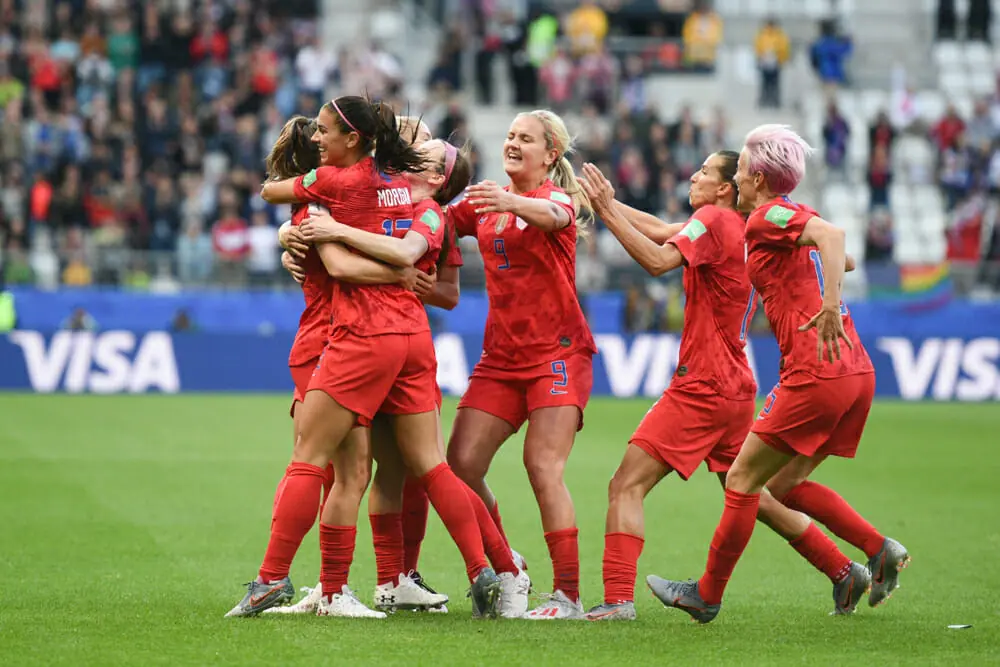
Dealing with Jet Lag & Other Logistical Factors
Additionally, there are key contextual factors surrounding a player’s management before and during camp, with particular regard to travel, sleep and environmental factors.
Given the global nature of soccer and the distribution of national team players competing in different nations, there may be considerable air travel involved with numerous time zones changes.
As a result, performance and medical staff may note both the duration and direction of travel (Eastward travel has been shown to promote further sleep and performance disruption (Fowler et al., 2017) in order to put plans in place to combat travel fatigue and jet-lag begin training and an appropriate time with respect to sleep-wake and light-dark cycles exposure (Lastella, Roach and Sargent, 2019).
Unaccustomed training, match and meal times are also often impactful on an individual’s circadian rhythm (hormone secretion, body temperature) which can potentially lead to sub-optimal performance (Fullagher et al., 2015).
Additionally, nutritional and hydration interventions should be emphasized with a lack of access to quality meal provision and increased dehydration within the pressurized air cabin (Waterhouse, Reilly and Edwards, 2007).
Acclimitising to New Locations
Furthermore, frequent travel to various unfamiliar climates are also common in international soccer, such as in qualifying and at major tournaments.
With competitions being held in environments contending with heat and humidity, severe cold and at high altitude, the effect on acclimatization and compromised submaximal and maximal exercise performance should be accounted for.
For example, the use of numerous cooling (ice vest, ice slurry, cooling towels), nutritional (dietary and supplementary iron and nitrates), hydration (electrolyte consumption) and programming (work-to-rest ratios, intensities and field dimensions) strategies may be implemented to negate these environmental effects (Maughan and Shirreffs, 2004; Gonzelez-Alonso, Crandall and Johnson, 2008; Buchheit et al., 2013)
Reciprocal Exchange of Data
As previously mentioned, the necessity for a collaborative exchange of relevant information between club and national team staff is paramount.
Access to physical data from previous four to six weeks can illustrate typical club training and recovery rhythms and periodization to compare to the upcoming national team schedule.
Additionally, available performance testing and fatigue monitoring data can also highlight an individual’s physical capacities as well as typical time-course of recovery in the ensuing 48h post-match.
All this is only possible with clear, open lines of communication between parties where there is transparency and cohesion to be able to support the clubs assets and return them safely (Buchheit, 2018).
This could be achieved with regular digital communication as well as the use of online portals to exchange and house information with ease.
A note of caution, however, is the difficulty in comparing physical tracking and testing data given the inherent limitations in interchangeability, although recent data has shown more promising correlations (Taberner et al., 2020).
The various commercially-available GPS systems, for example, present difficulties for direct data comparisons due to differences in both their software and hardware.
Various studies have advised care when using data from different brands due to advances in sampling rates, filter algorithms, dwell times and selected velocity zones and thresholds and software processing updates (Buchheit et al., 2014; Varley et al., 2017; Malone et al., 2017).
Ideally, organisations can build or have access to athlete management systems (AMS) to enable safe and efficient storage and reporting of historical data to strengthen their understanding of players within their talent pool and inform future sports science strategies enhance performance.

Join Our Soccer Performance Course
The demand for sports science, physiotherapists, and performance & coaching specialists in football & team sports is growing year upon year.
Thousands of students are leaving university with a sports science degree, physio or therapy-related qualification, however many of them asking the key question – What now?
- How do I get a job in football?
- What’s the next step?
- Which area of sport or football science & medicine do I want to specialise in?
This is certainly an interesting question as progressing from completing a sporting, medical or therapy-related degree to then working in professional football & trying to understanding all the key components, and soft skills that come with jobs in football or careers within sport is complex.
As a result, the bespoke courses developed by ISSPF Elite Medical & Football Science Faculty members are a way of further exposing learners, parents, professional coaches, students, or other individuals interested in football science with a thirst to develop & upskill further.
The link below will take you to the hugely popular & expertly designed ISSPF endorsed & University & Football Association accredited Soccer Science & Performance online sport science course, where you will be exposed to sports medicine & football science with a coaching science led research overview, and practical examples used by the game’s leading practitioners.
Soccer Science & Performance Online Sport Science Course
How This Course Will Improve You
- Provides justification for the guiding of specific training methods, interventions & decision making processes within soccer.
- Highlights the practical application of modern, research based training methods & assessment tools.
- Provides an increased evidence & knowledge to understand key soccer science & performance processes across a range of coaching science topics.
- Discusses the most efficient training methods and detailed insights into developing player fitness alongside rehabilitation & training methodologies.
- Learn from industry experts in the area of football science, nutrition, sport science & performance training in team sports.
- Help maximise your decision making through a better understanding & appreciation of football or soccer science.
What Does This Course Cover?
Outline of the Soccer Science & Performance Course:
Module 1: The demands of professional soccer: Physiological costs of the game
Lecturer: Dr. Vasilis Kalapthorakos (Greece)
Topic: Physiology
Module 2: Developing Resilience in Soccer: Mental Skill Development
Lecturer: Nikki Crawley (England)
Topic: Psychology
Module 3: Game model building & development: Reinterpreting Tactical Periodisation
Lecturer: Dr. Alejandro Romero-Caballero (Spain)
Topic: Training Methodology
Module 4: Injury reduction strategies in professional soccer
Lecturer: Dr. Patrick Orme (England)
Topic: Injury Prevention
Module 5: Leadership and Culture for High Performance Soccer
Lecturer: Maximillian Lankheit (Germany)
Topic: Psychology
Module 6: Current trends in leading European soccer teams: In-Possession
Lecturer: Chris Meek (England)
Topic: Performance Analysis
Module 7: Soccer nutrition & the role of the nutritionist
Lecturer: Matthew Jones (England)
Topic: Nutrition
Module 8: Competitive soccer training microcycle: Structure & justification
Lecturer: Dr. Manuel Segovia (Spain)
Topic: Training Methodology
Soccer Science & Performance Online Sport Science Course
Article References
Bengtsson, H., Ekstrand, J., and Hagglund, M. (2013). Muscle injury rates in professional soccer increase with fixture congestion: an 11-year follow-up of the UEFA Champions League injury study. British Journal of Sports Medicine, 47, 743-747.
Buchheit, M. (2018). Elite clubs and national teams: sharing the same party? Science and Medicine in Football, 2, (2), 83-85.
Buchheit, M. et al., (2013). Wellness, fatigue and physical performance acclimatisation to a 2-week soccer camp at 3600 m (ISA3600). British Journal of Sports Medicine, 47, Supplement 1, 100—106.
Buchheit, M., Al Haddad, H., Simpson, B.M., Palazzi, D., Bourdon, P.C., Di Salvo, V., Mendez-Villanueva, A. (2013). Monitoring Accelerations With GPS in Football: Time to Slow Down? International Journal of Sports Physiology and Performance, 9, 442-445.
Carling, C., McCall., A., LeGall., F. and Dupont, G. (2015). The impact of in-season national team soccer play on injury and player availability in a professional club. Journal of Sports Sciences, 33, 1751-1757.
Dellal, A., Chamari, K., Wong, D.P., Ahmaidi, S., Keller, D., Barros, R., Bisciotti, G.N. and Carling, C. (2011). Comparison of physical and technical performance in European soccer match-play: FA Premier League and La Liga. Journal of Sports Sciences, 11, (1), 51-59.
Dellal, A., Lago-Penas, C., Rey, E., Chamari, K. and Orhant, E. (2015). The effects of a congested fixture period on physical performance, technical activity and injury rate during matches in a professional soccer team. British Journal of Sports Medicine, 49, (6), 390-394.
Di Salvo, V., Pigozzi, F., Gonzalez-Haro, C., Laughlin, M.S. and De Witt, J.K. (2013). Match performance comparison in top English soccer leagues. International Journal of Sports Medicine, 34, 526-532.
Dupont, G., Nedelec, M., McCall, A., McCormack, D., Berthoin, S. and Wisloff, U. (2010). Effect of 2 soccer matches in a week on physical performance and injury rate. American Journal of Sports Medicine, 38, (9), 1752-1758.
Ekstrand, J., Lundqvist, D., Davison, M., D’Hooghe, M. and Pensgaard, A.M. (2019). Communication quality between the medical team the head coach /manager is associated with injury burden and player availability in elite football clubs. British Journal of Sports Medicine, 53, (5), 304-308.
Ekstrand, J., Walden, M. and Hagglund, M. (2004). A congested football calendar and the wellbeing of players: correlation between match exposure of European footballers before the World Cup 2002 and their injuries and performances during that World Cup, British Journal of Sports Medicine, 38, (4), 493-497.
Fowler, P.M, Knez, W., Crowcroft, S., Mendham, A.E., Miller, J., Sargent, C., Halson, S. and Duffield, R. Greater effect of east vs. west travel on jet-lag, sleep and team-sport performance (2017). Medicine and Science in Sports and Exercise, 49, (12), 2548-2561.
Fullager, H.K., Duffield, R., Skorski, S., Coutts, A.J., Julian, R. and Meyer, T. (2015). Sleep and Recovery in Team Sport: Current Sleep-Related Issues Facing Professional Team-Sport Athletes. International Journal of Sports Physiology and Performance, 10, 950-957. (Waterhouse, Reilly and Edwards, 2007).
Gabbett, T.J. (2016). The training—injury prevention paradox: should athletes be training smarter and harder? British Journal of Sports Medicine, 5, (5), 273-280.
Gonzalez-Alonso, J., Crandall, C.G. and Johnson J.M. (2008). The cardiovascular challenge of exercising in the heat. Journal of Physiology, 586, (1), 45-53.
Lago-Penas, C., Rey, E., Lago-Ballesteros, J., Casais, L. and Dominguez, E. (2011). The influence of a congested calendar on physical performance in elite soccer. Journal of Strength and Conditioning Research, 25, (8), 2111-2117.
Lastella, M., Roach, G.D and Sargent, C. (2019). Travel fatigue and sleep/wake behaviors of professional soccer players during international competition, Sleep Health, 5, (2), 141-147.
Malone, J.K., Lovell, R., Varley, M.C. and Coutts A.J. (2017). Unpacking the black box: applications and considerations for using GPS devices in sport. International Journal Sports Physiology Performance, 12, 18–26.
Maughan, R. and Shirreffs, S. (2004). Exercise in the heat: challenges and opportunities. Journal of Sports Sciences, 22, (10), 917-927.
Noor, D., McCall, A., Jones, M., Duncan, C., Ehrmann, F., Meyer, T., and Duffield, R. (2019). Transitioning from club to national teams: Training and match load profiles of international footballers. Journal of Science and Medicine in Sport, 22, (8), 948-954.
Taberner, M., Allen, T., O’Keefe, J., Cohen, D.D. (2020). Contextual considerations using the ‘control-chaos continuum’ for return to sport in elite football – Part 1: Load Planning. Physical Therapy in Sport, 53, 67-74.
Varley, M.C., Jaspers, A., Helsen, W.F. and Malone, J. (2017). Methodological considerations when quantifying high-intensity efforts in team sport using global positioning system technology. International Journal of Sports Physiology and Performance, 12, (8), 1-25.
Share this article:
